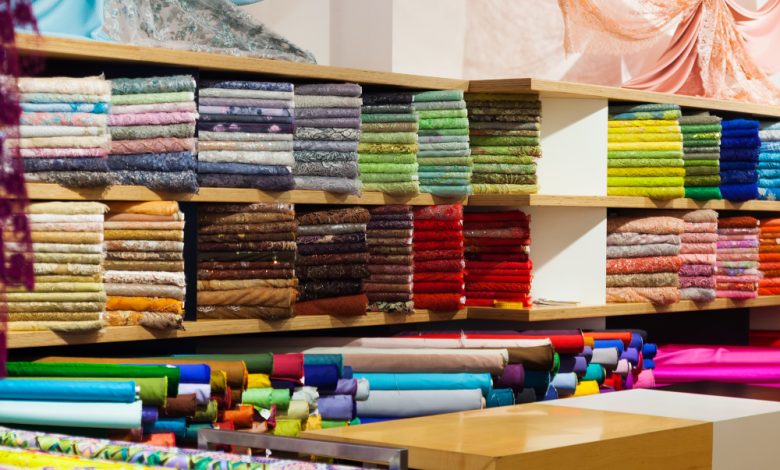How to Shop Smart for Fabrics: A Guide to Fabric Shops

Fabric shopping can be an exciting yet overwhelming experience, especially for those new to sewing or crafting. With countless options available, it’s essential to approach fabric shopping with knowledge and strategy. This comprehensive guide will help you navigate fabric shops like a pro, ensuring you make informed decisions and get the best value for your money.
Understanding Fabric Types
Before stepping into a Fabric Shop, it’s crucial to familiarize yourself with different fabric types. Fabrics are generally categorized into natural fibers (like cotton, linen, silk, and wool) and synthetic fibers (such as polyester, nylon, and acrylic). Each type has its unique properties, advantages, and best uses.
Natural fibers are often prized for their breathability and comfort, while synthetic fibers are known for their durability and easy care. Some fabrics, like cotton-polyester blends, combine the benefits of both natural and synthetic fibers.
Understanding the characteristics of various fabrics will help you choose the right material for your project. For instance, if you’re making a summer dress, you might opt for a lightweight, breathable fabric like cotton or linen. For a winter coat, you might choose a wool blend for warmth and durability.
Preparing for Your Shopping Trip
Preparation is key to a successful fabric shopping experience. Before heading to the store, consider the following steps:
- Determine your project requirements: Know the type and amount of fabric you need.
- Set a budget: Fabric prices can vary widely, so having a budget in mind will help you narrow down your options.
- Bring swatches or color samples: If you’re trying to match a specific color or pattern, bring a sample with you.
- Pack essential tools: A tape measure, scissors, and a notebook can be incredibly helpful.
- Wear comfortable clothing: You might be on your feet for a while, so dress comfortably.
Choosing the Right Fabric Shop
Not all fabric shops are created equal. Some specialize in certain types of fabrics, while others offer a wide variety. Here are some factors to consider when choosing a fabric shop:
- Selection: Does the shop carry the types of fabrics you need?
- Quality: Are the fabrics of good quality?
- Price: Do the prices fit your budget?
- Customer service: Is the staff knowledgeable and helpful?
- Additional services: Does the shop offer cutting services, classes, or other helpful resources?
It’s often worth visiting multiple shops to compare offerings and find the best fit for your needs.
Navigating the Fabric Store
Once you’re in the store, take your time to explore. Fabric shops are typically organized by fabric type or purpose. Don’t be afraid to ask for assistance if you can’t find what you’re looking for.
Most fabric stores have bolts of fabric on display. You can usually touch and feel the fabrics, which is crucial for assessing quality and suitability for your project. Some shops also have remnants or pre-cut fabrics, which can be more affordable for smaller projects.
Assessing Fabric Quality
Determining fabric quality is a crucial skill for any sewer or crafter. Here are some tips:
- Feel the fabric: Quality fabrics usually feel smooth and even.
- Check the weave: A tight, even weave generally indicates higher quality.
- Look for defects: Check for any flaws, stains, or irregularities in the fabric.
- Consider the fabric’s drape: How the fabric hangs can give you an idea of how it will look in your finished project.
- Read the fabric content label: This will tell you what the fabric is made of and how to care for it.
Remember, the most expensive fabric isn’t always the best quality, and sometimes a less expensive fabric might be perfect for your needs.
Understanding Fabric Terminology
Fabric shopping comes with its own vocabulary. Here are some terms you might encounter:
- Bolt: The large roll that fabric is wound around for display and sale.
- Selvage: The finished edge of the fabric that runs parallel to the lengthwise grain.
- Grain: The direction of the yarns in a woven fabric.
- Nap: The fuzzy surface on some fabrics, like velvet or corduroy.
- Bias: The diagonal direction across the grain of the fabric.
Understanding these terms will help you communicate more effectively with store staff and make more informed decisions.
Buying the Right Amount
Purchasing the correct amount of fabric is crucial to avoid waste or coming up short. Here are some tips:
- Always buy a little extra: It’s better to have slightly too much than not enough.
- Consider shrinkage: Some fabrics, especially natural fibers, may shrink when washed.
- Account for pattern matching: If you’re working with a patterned fabric, you might need extra to match the pattern across seams.
- Check the fabric width: Fabric typically comes in different widths, which can affect how much you need.
Most patterns will specify how much fabric you need, but it’s always a good idea to double-check your measurements.
Caring for Your Fabric
Once you’ve purchased your fabric, proper care is essential to maintain its quality. Always check the care instructions before washing or treating your fabric. Some fabrics may need to be pre-washed before use to prevent shrinkage in your finished project.
Store your fabric in a cool, dry place away from direct sunlight to prevent fading. If you’re storing fabric for an extended period, consider wrapping it in acid-free tissue paper to prevent yellowing.
Building Relationships with Fabric Shops
Regular visits to your local fabric shop can lead to valuable relationships. Many shop owners and staff members are passionate about fabrics and sewing, and they can be excellent sources of advice and inspiration.
Don’t hesitate to ask questions or seek recommendations. Some shops offer loyalty programs or discounts for frequent customers, which can lead to savings over time.
conclusion
In conclusion, smart fabric shopping involves understanding fabric types, preparing adequately, choosing the right shop, assessing quality, and buying the correct amount. With practice, you’ll develop an eye for quality fabrics and a knack for finding the perfect material for your projects. Remember, every fabric purchase is an opportunity to learn and improve your crafting skills. Happy shopping!



